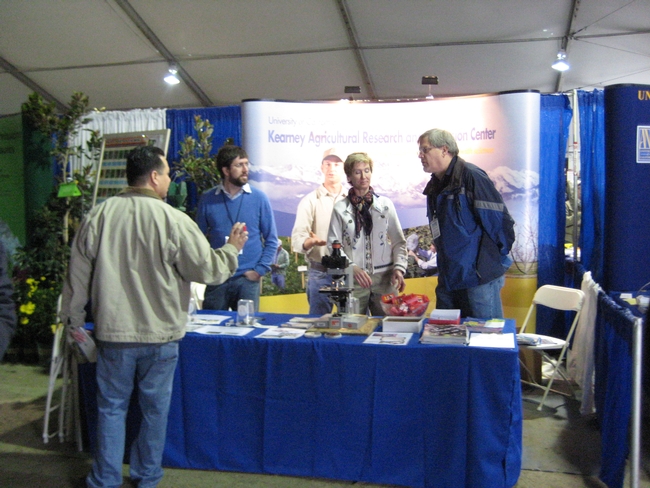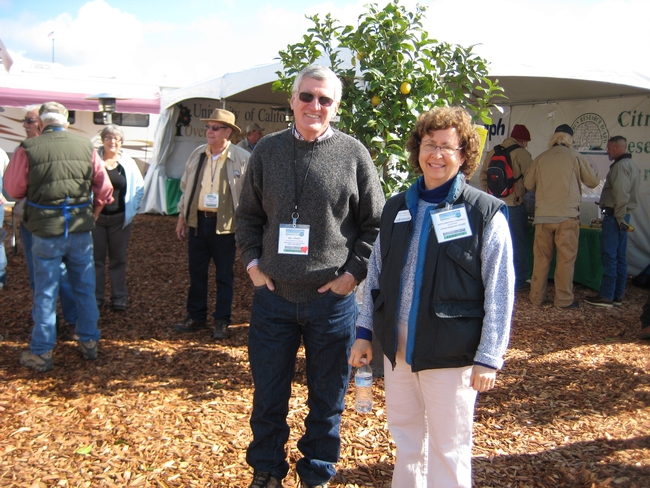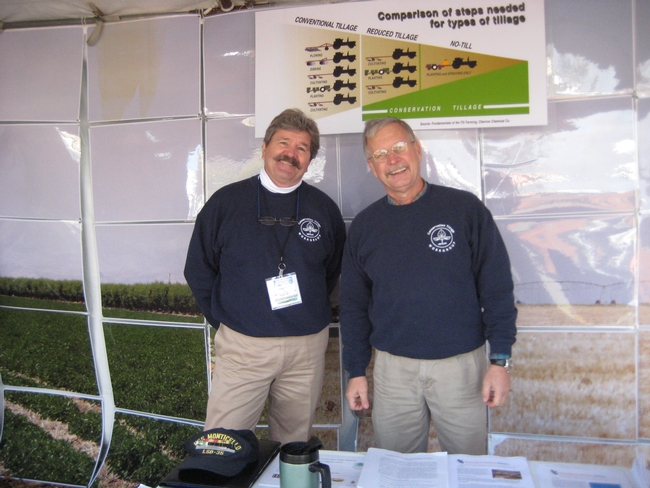Posts Tagged: Jeff Mitchell
Six-part conservation agriculture documentary premieres Aug. 6
The San Joaquin Valley boasts many of America’s most innovative farms. However, in terms of conservation agriculture practices – such as using little or no tillage, maintaining crop residues on the soil surface, and irrigating with buried drip or overhead systems – the most important agricultural region in the world is lagging behind.
To introduce more valley farmers to the benefits of conservation agriculture practices, Conservation Agriculture Systems Innovation (CASI) produced a six-part documentary featuring California farmers, UC researchers and agency representatives. The series premieres Aug. 6 on the CASI website (http://CASI.ucanr.edu) with a 7-minute segment that lays out the theoretical principles and the scientific basis for conservation agriculture. Additional segments will be released each Monday for five weeks thereafter.
Throughout the series, viewers will meet farmers who are implementing conservation agriculture successfully and profitably on their Central Valley farms. The 6- to 10-minute episodes review the core principles and practices associated with conservation agriculture systems and provide examples of successful local adoption.
After the six-week series airs, viewers, farmers and others interested in conservation agriculture are invited to the UC West Side Research and Extension Center in Fresno County for the annual Twilight Conservation Agriculture Field Day, Sept. 13. The event, which begins at 4 p.m. and concludes when darkness falls, is free and includes a barbecue dinner. Viewers can get clarification on points from the video series and meet many of the farmers and scientists featured in the documentary, plus get a first-hand look at conservation agriculture research currently under way.
To register for the Twilight Field Day go to http://ucanr.edu/TwilightRegistration. The West Side Research and Extension Center is at 17353 W. Oakland Ave., Five Points.
“Our goal with the video series is to reach a wider audience of farmers with our research results and on-farm success stories, which show conservation agricultural practices can help make farmers more competitive and sustainable in the long run,” said Jeff Mitchell, UC Cooperative Extension specialist in the Department of Plant Sciences at UC Davis.
The Conservation Agriculture Systems Innovation documentary series includes the following episodes:
Aug. 6: “Introduction to conservation agriculture” – The first video defines conservation agriculture and outlines its increasing credibility in the global context.
Aug. 13: “Maintaining crop residues” – California farmers have tended to adopt “clean cultivation” systems, but research has shown that maintenance of residues from the previous crop or a winter cover crop helps improve soil and reduces evaporation from the surface.
Aug. 20: “Conservation agriculture in tomato production systems” – These systems cut production costs, reduce dust emissions and store more carbon in the soil.
Aug. 27: “Conservation agriculture in dairy silage production systems” – Three dairy farmers committed to conservation agriculture systems in their silage production share their secrets and success.
Sep. 3: “Minimum tillage systems” – This video features examples of a number of reduced pass or ‘pass combining’ tillage systems that have been developed during the past decade.
Sep. 10: “Coupling conservation tillage with overhead irrigation” – Overhead irrigation systems, such as center pivots, are particularly useful when coupled with conservation tillage.
For more information, contact Mitchell at (559) 303-9689 or jpmitchell@ucdavis.edu.
Long-term study: Conservation tillage saves oil, soil and toil in cotton
A 12-year study published in the July-September 2012 issue of the University of California’s California Agriculture journal demonstrates that cotton grown in rotation with tomatoes — using lower-impact conservation tillage — can achieve yields similar to standard cultivation methods and at lower cost.
Conservation tillage seeks to reduce the number of times that tractors cross the field, in order to protect the soil from erosion and compaction, and save time, fuel and labor costs. Cotton crops are planted directly into stubble from the previous crop in the rotation.
In the study, conducted from 2000 to 2011 at the UC West Side Research and Extension Center in Five Points (southwest of Fresno), the number of tractor passes for a cotton-tomato rotation grown with a cover crop was reduced from 20 in the standard treatment to 13 with conservation tillage.
By the final years of the in the San Joaquin Valley study, cotton lint yields were statistically equivalent and even higher (in 2011) than with standard cultivation methods.
“The UC studies have consistently shown that conservation tillage can yield as well as standard tillage in a cotton-tomato rotation,” lead author Jeffrey P. Mitchell, UC Cooperative Extension specialist in the Department of Plant Sciences at UC Davis, and co-authors wrote in California Agriculture journal. Mitchell is based at the UC Kearney Agricultural Research and Extension Center.
Their study, "Conservation tillage systems for cotton advance in the San Joaquin Valley," as well as the entire July-September 2012 issue of California Agriculture journal, can be viewed and downloaded online at: http://californiaagriculture.ucanr.edu.
Mitchell is a founder of Conservation Agriculture Systems Innovation (CASI), a diverse group of more than 1,800 farmers, industry representatives, UC and other university faculty, and members of the Natural Resources Conservation Service and other public agencies (http://CASI.ucanr.edu). CASI defines conservation tillage as a suite of cultivation practices — including no-tillage, minimum tillage, ridge tillage and strip tillage — that reduce the volume of soil disturbed and preserve crop residues in the field. Conservation tillage is common in other regions of the United States and parts of the world and is beginning to gain acceptance in California agriculture.
Technological upgrades to tillage implements have been critical to the advancement of conservation tillage systems. These include equipment that can target operations to just the plant row rather than the whole field as well as accomplish several operations at the same time.
Fuel use was reduced by 12 gallons and labor by 2 hours per acre in the conservation tillage plots. This amounted to savings of about $70 per acre in 2011 dollars.
Mitchell noted that more research is needed on the adequate development of cotton stands and the prevention of soil compaction under different conditions, but that the benefits of conservation tillage are becoming increasingly obvious. “Provided that yield performance or more importantly bottom-line profitability can be maintained and the risks associated with adopting a new tillage system are deemed reasonable, conservation tillage systems may become increasingly attractive to producers and more common in San Joaquin Valley cotton-growing areas.”

Conservation tillage can achieve yields similar to standard cultivation methods and at lower cost.
UC at the World Ag Expo
The UC Kearney Agricultural Research and Extension Center has a presence at what is billed the world's largest agricultural exposition, the World Ag Expo in Tulare, Calif., Feb. 14-16, 2012.

Computer resource specialist Robert Johnson, assistant program and facility coordinator Julie Sievert and KARE director Jeff Dahlberg answer questions at the KARE booth in Pavilion A.

Director of the REC system Bill Frost visits Beth Grafton-Cardwell, director of Lindcove Research and Extension Center, in a booth shared with the Citrus Research Board.

Ron Harben with UC Cooperative Extension cropping systems specialist Jeff Mitchell.